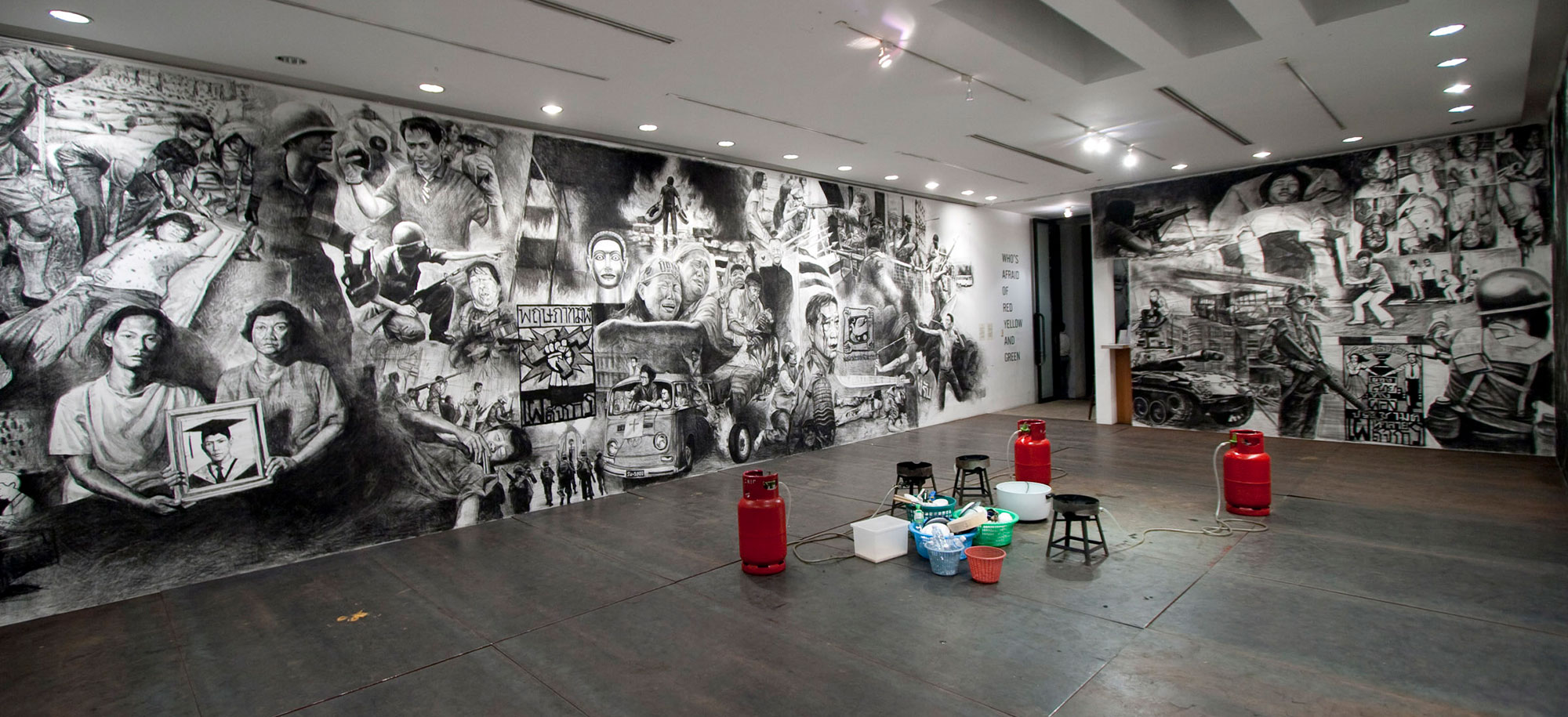FOCUS: Rirkrit Tiravanija

Rirkrit Tiravanija
untitled 2011 (police the police), 2011
Pencil on wall, cooking utensils, steel
312 x 312 inches (792.5 x 792.5 cm) walls 441 inches (1120.1 cm) diagonal
Image copyright: Courtesy of the artist and Gavin Brown’s enterprise, New York
Conceptual artist Rirkrit Tiravanija (pronounced Rick-rit Tee-rah-vah-nit), born in 1961 in Buenos Aires, Argentina, grew up living between Thailand, Ethiopia, and Canada as the son of a Thai diplomat. His grandmother played an important role in his life. She taught cooking on Thai television and owned a restaurant in Bangkok, where Tiravanija spent time as a youth. This background influenced the artist’s work, which often involves cooking in art-related places, such as museums and galleries.
For one of his first solo exhibitions in New York City in 1992 at 303 Gallery, Tiravanija cooked Thai food and served it for free to visitors who attended his opening. In 1995, he presented a similar work at the Carnegie International exhibition at the Carnegie Museum of Art in Pittsburgh by cooking and serving Thai food to visitors. The exhibition included wall text with a written recipe for South-east Asian green curry.
As with these early examples, Tiravanija’s central focus has remained on exploring human interactions and bringing people together to share. In addition to cooking, the artist has constructed environments within the museum setting where guests can read or listen to music. More recently, he has set up T-shirt factories for visitors to his exhibitions. By creating such works, Tiravanija blurs the distance between the artwork and the viewer. His exploration of the communal role of art and everyday actions as art recalls Joseph Beuys’s notion of social sculpture (art’s potential to transform society through human activity with language, thought, action, and objects).
Tiravanija is often recognized for his role in “relational aesthetics,” a movement in art in which social interaction is key and the artist is a catalyst for social exchanges. In addition to his performances, the artist has created wall drawings, sculptures, installations, and text-based works that often relate to his social initiatives.
Tiravanija studied at the Ontario College of Art in Toronto and the Banff Centre School of Fine Arts before attending the School of the Art Institute of Chicago and the Independent Study Program at the Whitney Museum of American Art, New York. His work is in the collections of the Museum of Modern Art, Oslo, Norway; Museum of Contemporary Art, Bangkok, Thailand; Carnegie Museum of Art, Pittsburgh; Solomon R. Guggenheim Museum, New York; Migros Museum für Gegenwartskunst, Zurich, Switzerland; Museo de Arte Contemporáneo de Castilla y León, León, Spain; The Museum of Contemporary Art, Los Angeles; The Museum of Modern Art, New York; Saint Louis Art Museum, Saint Louis; and the Walker Art Center, Minneapolis, among several other institutions across the globe. Tiravanija currently lives and works between New York, Berlin, and Bangkok.
Rirkrit Tiravanija
untitled 2011 (police the police), 2011
Pencil on wall, cooking utensils, steel
312 x 312 inches (792.5 x 792.5 cm) walls 441 inches (1120.1 cm) diagonal
Image copyright: Courtesy of the artist and Gavin Brown’s enterprise, New York
